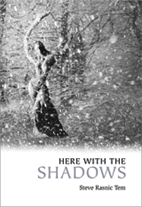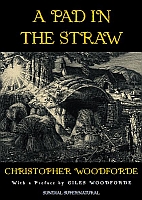 Here With The Shadows
Here With The Shadows
by Steve Rasnic Tem
Swan River Press 2014
First Edition Hardcover, 165 pages
A review by Mario Guslandi
Here’s a short story collection by an American writer, published by a small British imprint, reviewed by an Italian reviewer and posted on an Australian website. Globalization has reached the world of dark fiction and this is a good thing because the present volume deserves to be enjoyed by as many readers as possible.
Steve Tem is a very prolific author of “quiet” horror in its various shades, probing the secrets hidden in the human heart, which is the very source of any real horror. In his work you’ll hardly find monsters, gore and violence; you’ll find the sad, disquieting side of the horrors that affect our daily life.
This particular collection is devoted to ghost stories, but, again, you won’t find here howling spectres lurking in old castles, but disturbing shadows lingering at the corners of our towns and cities. And most of those shadows are images of a past that still haunt our souls.
Among the fifteen tales assembled in the book, most are really outstanding examples of how good Tem is at his best.
The title story “Here with the Shadows” is a delicate, insightful piece where an old man lives his last days surrounded by a crowd of shadows, the shadows of the dead, while “A House by the Ocean” is a mesmerizing ghost story full of sorrow and despair, featuring two sisters separated for too long.
In the gentle “G is for Ghost”, the main character is the ghost of a child, while in the subtly unnerving “Telling” the hidden secrets of a haunted house are finally disclosed.
“Back Among the Shy Trees” is an enigmatic, disturbing tale where a man returning to his now abandoned family house discovers some sinister facts about his long forgotten childhood.
“Seeing the Woods”, a story of intense lyricism, portrays an old semi-blind lady living in a cabin in the woods. Here the ghosts are those of her beloved trees burned down during a fire.
The nostalgic, melancholy “Smoke in a Bottle” depicts how the past is a ghost haunting our present and “Est Enim Magnum Chaos” is yet another great story about life and death, loneliness and old age, where people, as in the lyrics of the famous song “Ol’ Man River” are “tired of living but scared of dying”.
All great stuff.
-Review by Mario Guslandi

